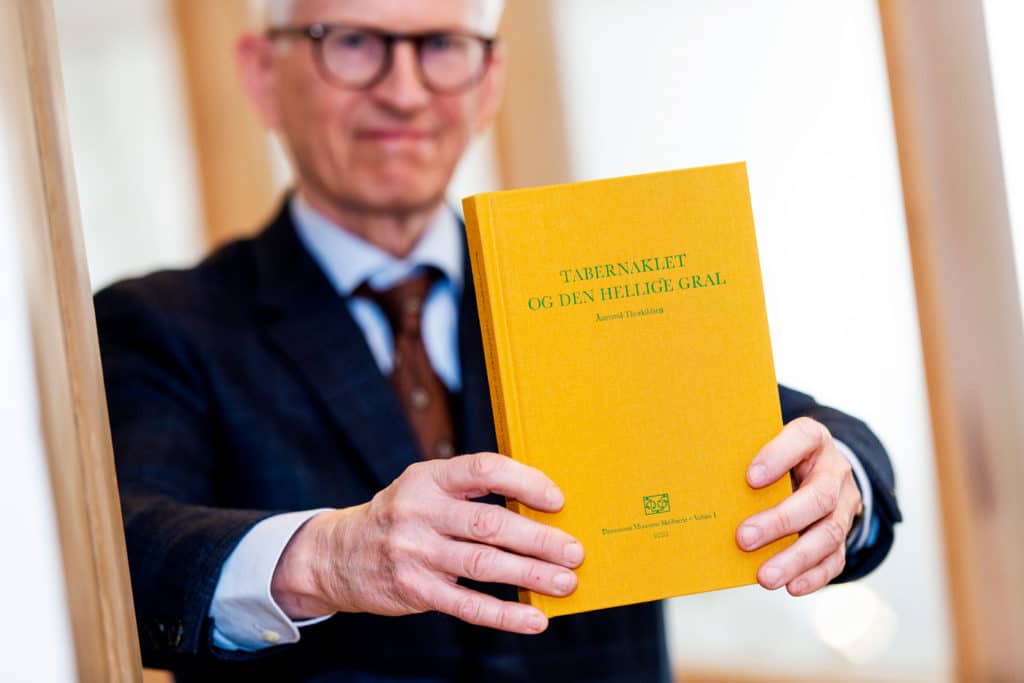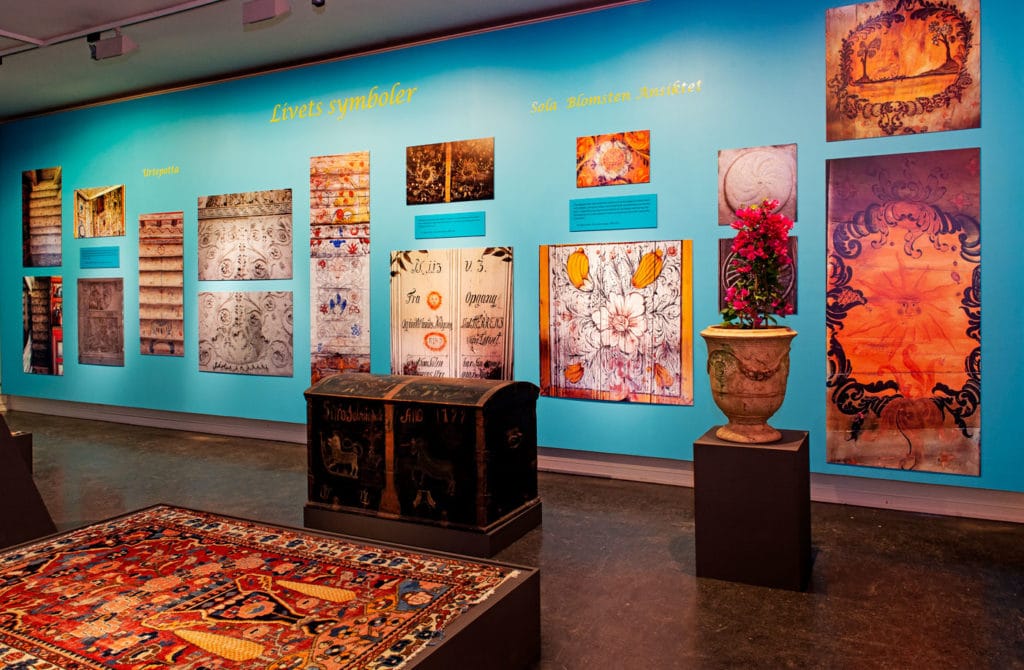Symbols of life
The exhibition Symbols of Life shows ornamental art in oriental rugs and the village's decorative painting.
Curator Åsmund Thorkildsen.
After the exhibition Norwegian modernism and the village's decorative painting (Lyche pavilion 2019), Åsmund Thorkildsen continued to examine the symbolism of the decorative art that filled entire church interiors in Numedal and fully decorated farmhouses in Hallingdal and parts of Telemark between about 1680 and 1820. The results of Thorkildsen's research will be published in the book The Tabernacle and the Holy Grail.
The symbolism we encounter here has many individual figures and ornamental symbols that have their origins in the Mediterranean cultures in early antiquity, and is something we still find in the patterns in oriental rugs. The research has been able to map out that our rural decor is a combination of growth and fertility culture in the Bible and the agricultural cultures' thousands of years long tradition of using plant forms to show the importance and usefulness of fertility to ensure prosperity.
The symbols the exhibition will present also have a subtle and poetic, erotic undertone. The exhibition is therefore lush and sensual, a small exhibition that addresses both the audience's perception and reflection.
The tabernacle and the holy grail are for sale in our museum shop or sent to post@drammensmuseum.havdur.design
Price NOK 349 + postage
The exhibition is designed to be sensually accessible. It shows much of what is said in the book. We have expanded the perspective from the book by also drawing in oriental rugs, where some of the same motifs and symbols are used as what we see in the decorations in the eastern Norwegian villages. In addition, there are parallels to the symbols of antiquity and antiquity, which are thoroughly treated in the book.
Åsmund Thorkildsen, museum director
The symbols the exhibition will present also have a subtle and poetic, erotic undertone. The exhibition is therefore lush and sensual, a small exhibition that addresses both the audience's perception and reflection.
Åsmund Thorkildsen, museum director
Venue
Monday to Friday 11.00 - 15.00
Wednesday 11.00 – 18.00
Saturday 11.00 – 16.00 (free admission)
Sunday 11.00 – 16.00
Supported by



